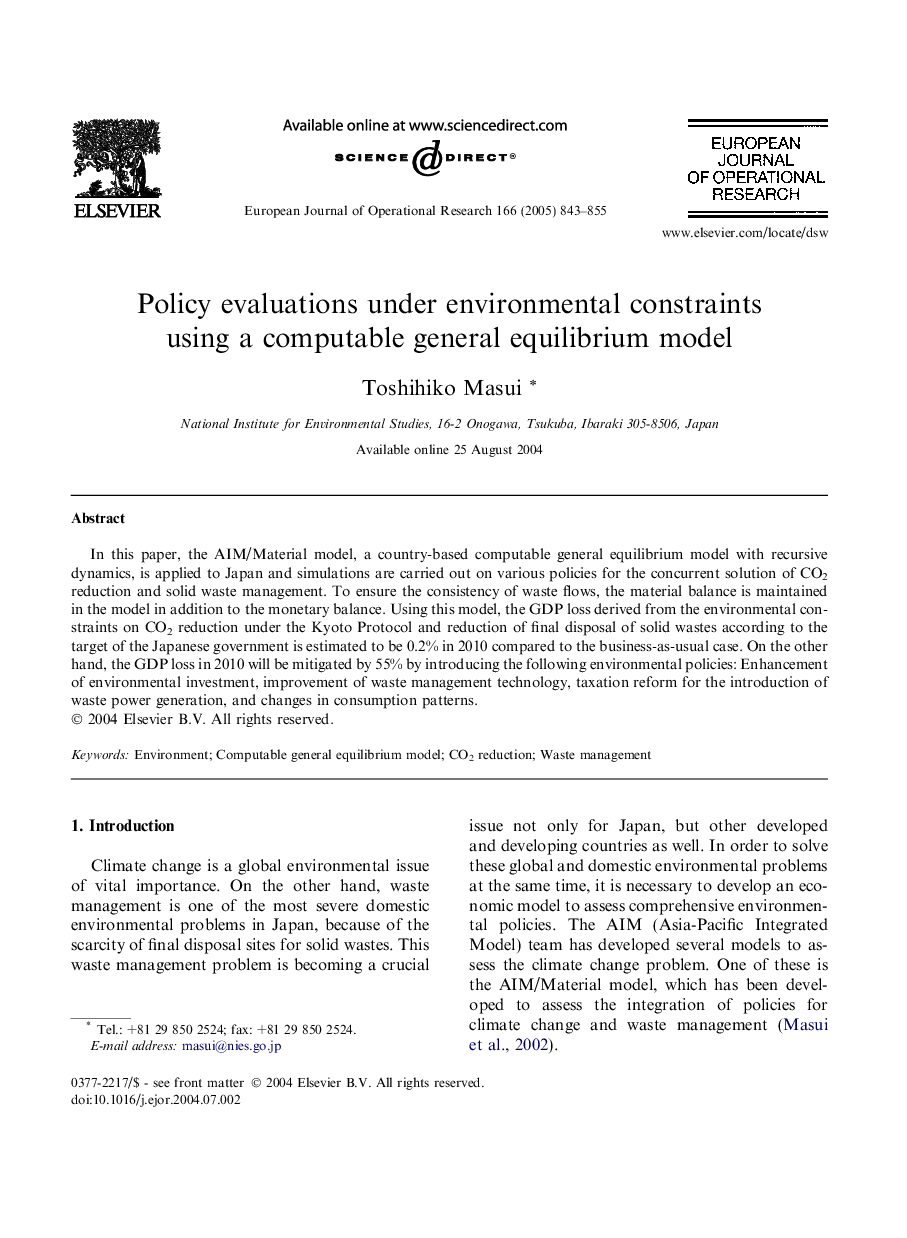| Article ID | Journal | Published Year | Pages | File Type |
|---|---|---|---|---|
| 9663674 | European Journal of Operational Research | 2005 | 13 Pages |
Abstract
In this paper, the AIM/Material model, a country-based computable general equilibrium model with recursive dynamics, is applied to Japan and simulations are carried out on various policies for the concurrent solution of CO2 reduction and solid waste management. To ensure the consistency of waste flows, the material balance is maintained in the model in addition to the monetary balance. Using this model, the GDP loss derived from the environmental constraints on CO2 reduction under the Kyoto Protocol and reduction of final disposal of solid wastes according to the target of the Japanese government is estimated to be 0.2% in 2010 compared to the business-as-usual case. On the other hand, the GDP loss in 2010 will be mitigated by 55% by introducing the following environmental policies: Enhancement of environmental investment, improvement of waste management technology, taxation reform for the introduction of waste power generation, and changes in consumption patterns.
Related Topics
Physical Sciences and Engineering
Computer Science
Computer Science (General)
Authors
Toshihiko Masui,
